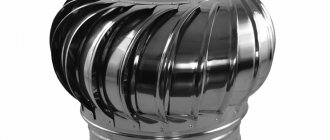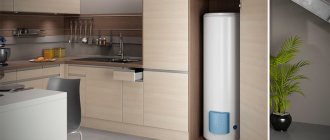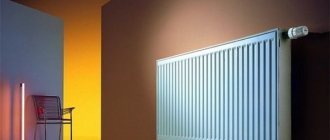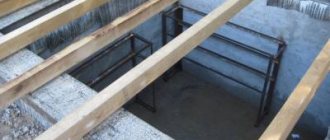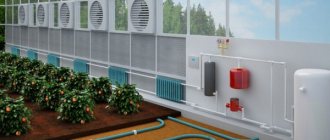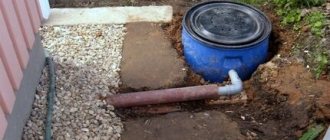Residents of summer cottages have always faced the problem of a constant lack of hot water, which they used for domestic needs. And even the built bathhouse did not solve this problem. And it was solved by wood-burning water heaters, with the help of which it was possible to quickly heat a fairly large volume of water. And although today they are gradually losing their necessity, not all country residents have abandoned them. Therefore, in this article we will talk about wood-burning water heaters, their design features and operating principles, pros and cons.
Wood-burning water heater Source es.decorexpro.com
Differences in the design of water heaters
The name “Titan” is popularly attached to such devices, although there are several manufacturers of wood-burning speakers.
In principle, titans have a similar design, but there are still a number of differences, based on this we will give a classification:
- in different models the firebox can be either separate or combined with a water tank
;
Note! This division allows the tank to be rotated, which is convenient in cases where it is necessary to make a connection in the bathroom. The tank can simply be turned in the desired direction.
- By the type of tank material, we can mention products made of cast iron, ordinary steel, stainless steel; enameled water heaters have also earned positive reviews. The firebox is made of steel or cast iron;
- in more modern models, a seat for installing a heating element may be provided
. If there is electricity at the dacha, then titanium will be able to work both from burning solid fuel and from the network. When equipping a structure with a heating element, the manufacturer most often equips it with a thermostat, which will allow you to automatically maintain the temperature of the water in the tank;
- Also, most manufacturers take into account the operating features of the products and make it possible to pour water from above. So if , then the tank can be filled with plain water;
- There are also gasified titans
, but this option from the point of view of autonomy is not the best option.
You can recognize which device is in front of you by the markings:
- the designation KVL LF indicates a boiler model with the possibility of using heating elements. Most likely, this model also has a thermostat to maintain a constant temperature;
- KVS - in this titanium model, the firebox and water tank are combined;
- the letters KVL indicate a separate firebox and water tank.
Criterias of choice
All models differ in materials of manufacture, build quality, and technical characteristics. To select the right heater, you need to familiarize yourself with several points:
- a hot water column with a built-in firebox heats up 10-15% faster;
- if the firebox is separate, then the water container can be rotated and it is possible to install the watering can in a convenient position;
- a cast iron firebox will last longer;
- a stainless steel water container is considered more reliable and durable;
- some models may have an electric heating device (TEH) to maintain the temperature.
Units made in Russia, Czech and Bulgaria are popular among consumers. Unpleasant consequences can be avoided if you know a few simple differences between a factory assembly and a fake:
- It is necessary to pay attention to welding seams. If they are uneven, carelessly cleaned and do not inspire confidence, then it is better to refuse the purchase.
- All accessories (handles, removable panels, covers) should fit tightly into the puzzles and be easily accessible.
- Check the availability of all necessary documents: technical passport, assembly and operating instructions, warranty card with stamp and signature.
For each model, information about the water tank capacity is provided. When choosing and purchasing a unit, you need to pay attention to these indicators. If the family is small, then there is no need to buy a 200 liter dispenser.
More information about wood-burning water heaters
At first glance, such devices look like relics of the past, but it’s no joke - during the rampant electricity and gasification, it is proposed to use firewood for heating. But wood-burning titanium does not lose popularity, so it’s worth figuring out what the reason for this is
Reasons for popularity
There are several reasons for the popularity of wood-burning water heaters:
- versatility - literally any flammable substance can be used as fuel with the exception of coal. Not only firewood can be used, but also sawdust, shavings, combustible waste from a summer cottage and even paper;
Note! If you nevertheless load coal into the firebox, the metal can quickly burn out - the temperature will be too high.
- economical - literally 5-7 medium-sized logs are enough to heat the water in the tank. Although the water heater is inferior in heating time to its electric counterparts, the process still proceeds quickly;
- ease of installation;
- low cost. The price of a modern water heater is about 15,000 rubles. For this money, the buyer receives a steel tank of 86 liters, a cast-iron firebox with an ash pan, as well as a mixer and a shower head, that is, a complete set, except for a chimney. The full volume of the tank is guaranteed to heat up to 80ᵒC within 45 minutes;
- Some enterprising summer residents use old water heaters as room heaters. Instead of water, sand is poured into the tank and the heater is ready for use; it can easily heat a small house in the country.
There are, of course, some minor drawbacks. For example, during severe use, the tank may leak along the seam; the reason for this lies in the fact that it is not designed to withstand significant pressure. You can also note the small thickness of the metal of the tank - about 3 mm.
Design and principle of operation
Any wood-burning water heater operates on the same principle - fuel is burned in the firebox, and the resulting energy is used to heat the water in the tank. The firebox and tank can be separated (this leads to a slight slowdown in the water heating process) or placed in one cylindrical body.
To ensure that the heat generated during fuel combustion is used as efficiently as possible, a gas exhaust pipe passes through the entire titanium. Due to this, the water heats up faster.
As for the chimney, its diameter exceeds 100 mm (manufacturers often make the outlet hole 115 mm). Due to this, conventional sandwich chimneys can be used. In order not to bother with laying it through the ceiling and roof, you can simply lead the pipe through the wall and lift it to ensure good traction.
Titan shower wood-burning water heaters have another interesting feature - the mixer that comes included has only 1 input - for cold water. But hot water is supplied from the water heater tank.
Note! It is for this reason that it is impossible to replace the complete mixer with a conventional analogue that you like. After all, typical bathroom faucets have 2 inputs.
Features of operation and improvement of titanium
The key feature of a wood-burning country water heater is that it is not designed to withstand significant pressure. The manufacturer assumes that water will be poured into the tank manually, the maximum - the required pressure will be created by a container raised on the roof, or a country water supply, but the pressure in it is low.
Separately, it is worth dwelling on the modernization of the design; a small improvement with your own hands and ordinary titanium can be used, for example, for water. Moreover, this will not lead to significant costs.
The point of modernization is that the mixer is removed from the usual circuit, and water circulation is organized as in conventional electrical devices:
- cold water will enter the tank from the bottom, at the point where the mixer was previously installed;
- In order for the water to be drained without problems, you will need to install an air intake valve near the top fitting. If you try to drain the water without it, then the air simply will not replace the drained water and it will not be possible to drain all of it;
- a safety valve (to relieve excess pressure) is installed optionally. The fact is that if a tank raised to the attic is used as a source of water, then it will play the role of an expansion tank in the heating system and the pressure in the water heater tank will not exceed the norm;
- It can also be recommended to additionally insulate the titanium tank, but this is at the request of the owner.
Installation and connection of titanium
This stage is also performed without the help of specialists. First of all, you should take care of fire safety; after all, titanium heats up quite well, and a coal can always fall out of the firebox.
Several rules must be followed:
- The wood-burning water heater is installed only on a base made of non-combustible material. You can cover a section of the floor with asbestos slabs or build a small foundation of brick or concrete;
- the walls should be thermally insulated; any non-combustible materials, including asbestos boards, are suitable for this.
Connection instructions may look like this:
- there are 2 tanks on the roof of the shower - 1 with cold water, the 2nd with hot water (it can be lined with foam);
- the pump supplies cold water to both tanks from the well; it can also be supplied from the country water supply;
- then water from the insulated tank enters the titanium, heats up in it, and returns to the tank;
- From both tanks, supply pipes are connected to a conventional mixer in the shower; it is also possible to install pipes for other consumers.
Note! Thermal insulation of the tank allows you to maintain sufficient water temperature for at least a day.
Review of manufacturers
It should be noted that water heaters with showers for wood-burning cottages are not represented in the widest range on the market. Let's look at the most famous brands.
The domestic brand “Ermak” is represented on the market by four models:
- KVS - a unit with a separate cast-iron firebox , the volume of the water tank is 90 liters;
- KVS LF is exactly the same model as the first one, only it has an electric heating element ;
- KVL – water heating device with a built-in firebox , volume – 90 liters;
- KVL LF - the same as the previous model, only of a combined universal type with a built-in heating element .
The Bulgarian brand “Silistra” is also represented by four models: KVO, KVOE, KVN and KVNCH. All devices have the same volume – 80 liters.
Another Russian brand is Slobodskoye. It is presented in two brands: the usual purely wood-burning version of KVL and the universal KVL LF.
Design and operating principle
Perhaps to the modern generation a wood-burning heater seems like a curiosity, but our parents remember well what it is. Previously, the wood-burning column was called titanium. Structurally, a wood-burning boiler is a large water tank. Its capacity in a wood-burning column may vary. The capacity varies from 80 and 200 liters. Options for wood-burning heaters with greater productivity can be easily manufactured to order. Under the water tank of the titanium shower is a firebox for wood. This is where the whole process takes place. At the top of the wood boiler there is a shower outlet. Through it, hot water flows into the mixer, which is located below. The presence of pressure is not necessary for the entire process. Water under its own pressure can drain and fill the bathroom from a wood-burning boiler, and cold water can easily be unscrewed from the well.
The best quality is considered to be a wood-burning heater with a stainless steel tank. Such a wood-burning column better resists corrosion and temperature. The firebox of a wood-burning heater can be joint or separate. The difference is that in the second version of the wood boiler, the water tank can rotate around its axis. This means that it will be easier to place such a column in any room, since the firebox can be turned towards the door. Also, such a product is easier to maintain. If the combustion chamber of the boiler needs maintenance, this can easily be done separately. The tank is also easy to repair if it starts to leak.
Advice! Choose a wood-burning stove with a cast-iron firebox. Its walls do not burn out as quickly as sheet material, so it lasts longer. It also retains heat longer.
Characteristics of wood-burning water heaters
The question of what criteria to use to choose a wood-burning water heater for a shower in a country house is still relevant today. So what characteristics should you pay attention to?
- Firebox type . It can be separate from the water tank or welded to the latter. The second option works effectively. But if it breaks, it will be more difficult to repair it. As practice shows, it is easier not to carry out repairs, but to purchase a new device; this operation is too labor-intensive.
Wood-burning water heater with a removable firebox Source klivent.biz
- Unit power . Firstly, for wood-burning analogues the minimum value is 10 kW. This is a fairly serious parameter. This “titanium” is enough for a family of four.
- Water tank volume . There is not the widest choice here. Standard models have a volume of either 80 or 90 liters.
A few words about the configuration. Manufacturers offered and still offer three options:
- It’s just a water heater with two pipes : the bottom one is for pumping water from the water supply, the top one is for releasing hot water . Afterwards, pipework is connected to the pipe, which is distributed among consumers: shower, kitchen sink, bathhouse sink, etc.
- Water heater with mixer attached to the top pipe.
- Mixer with shower.
It was the latter option that was very popular among summer residents, because in those days there was a real opportunity to organize a shower at the dacha, which in suburban conditions has always been and is today an element of comfort.
Wood-burning water heater with shower Source oriclis.ru
Advantages and disadvantages
The main and undeniable advantage of a wood-burning heater is fuel. Not only firewood is suitable, but also anything that can burn without emitting toxic smoke. For example, if you have old tires without a cord lying around your dacha house, you can cut them into pieces and put them to use. Heating of water with them will occur faster, because they burn well and generate enough heat. Another positive point is the ease of integration into the existing water supply system. The shower column is also easy to connect to a storage tank, which can be located on the roof to create pressure.
If there is an electricity supply to the house, then you can additionally install a heating element in the wood-burning water heater, which will heat the water when you are too lazy to carry firewood. True, in the latter, titanium heats up many times faster than an electric boiler with a smaller volume of liquid. The device is completely independent and autonomous, so no interruptions in the network or water can prevent you from enjoying hot water. Another positive point is the relatively low cost of even the “top design”.
Disadvantages include the lack of automation. If you do not take into account models with a heating element and a thermostat, then titanium cannot be left and gone. It will either go out or, conversely, begin to boil if a second stack of firewood has been made. In the cold season, when the device is not planned to be used, the water must be drained. If it freezes and expands inside, this will lead to failure of the entire structure. For some, the disadvantage will also be the need to constantly clean up waste combustion products.
Main types of breakdowns
The operation of this type of speaker is impossible without a mixer, which is included in the kit in its original form.
To maximize the service life of the structure, you must follow the operating rules of this device:
- The wood-burning unit should be installed only on a fire-resistant surface;
- the distance from the burning fuel in the firebox to the walls must be at least 50 cm;
- fuel in the firebox must not be ignited with flammable liquids;
- the unit only needs to be connected to a separate chimney;
- Do not use water from the unit for drinking or cooking;
- leave water in the tank at zero temperature;
- It is prohibited to install a valve between the upper fitting and the watering can, this can lead to additional pressure;
- You cannot start the firebox when the tank is empty.
When operating a dispenser, constant monitoring of its operation is required: timely addition of fuel materials to the combustion stove, removal of combustion products.
Possible applications
A wood-burning heater can be used in the most unusual and interesting ways. The most obvious application is in the bathroom or outdoor shower. If in the summer you like to install an inflatable pool at your dacha or have a self-made structure, then such a wood-burning boiler can be used as a heater. To do this, you just need to bring a hose to the entry point, connect the pump to it, and throw the other end into the pool. Light the titanium and turn on the circuit and add firewood. The water from the pool will flow into the boiler, warm up and return back. In a short time it will be possible to warm up a large amount of water.
Thanks to the firebox in a wood boiler, energy is transferred not only to the water, but also to the environment. This means that with the right layout and choice of location, it is possible to organize heating of additional rooms. For example, a wood-burning boiler can be mounted into the wall so that the firebox opens into one room, and the shower is located directly in the bathroom. Due to the fact that the firewood will be stored in one room, it will also be warm due to the firebox and the heated tank.
Tips for choosing a stove
Recommendation number one: to heat the coolant in the water heating network, use a solid fuel boiler. If necessary, buy a long-burning model with a loading chamber volume of more than 100 liters. Modern TT boilers direct 75-80% of combustion energy to heat water and hardly raise the ambient temperature.
If, for various reasons, you want to install a stove with a heat exchanger, listen to the following tips:
- A cast iron or steel potbelly stove is well suited for a small cottage with an area of 40-80 m². The heater is enough for convection heating of the central room; place radiators in adjacent rooms.
- A fireplace insert or iron stove, equipped with panoramic glass, will be a successful decoration in the living room. One condition: use the product as an additional heat source, and place the main load on a gas or wood heat generator. Then you will be able to maintain cleanliness and order around the potbelly stove.
An example of a diagram for connecting a fireplace, a gas double-circuit boiler and radiator heating - When building a house, definitely install a brick stove. This is the best option compared to iron heaters.
- Theoretically, the power of the fireplace insert is enough to heat an area of 100-120 m². Practice shows: without the help of a second heat generator, it will have to be loaded with firewood at intervals of 3-4 hours. Therefore, expect a smaller heating area.
Important point. All wood-burning heaters equipped with a water circuit have one feature in common: due to intensive heat extraction, the surfaces of the register and the walls of the chimney are abundantly covered with soot. The only way out is to heat the stove at maximum so that the soot deposits burn out from the high temperature. Maintaining this mode is not always convenient.
How to select a design and calculate the heat exchanger area in a brick version of the furnace:
- If the register is located inside the firebox, 1 m² of its area can transfer up to 10 kW of heat to water. Example: you need to heat 80 square meters of space - you will need about 8 kW of energy and a heat exchange surface of 0.8 m².
- The coil in the chimney duct is not as effective. Expect a heat output of 400-500 W per 1 m² of register.
- For ease of cleaning, it is better to make the boiler flat - in the form of a tank with inlet pipes. Ribbed structures made from round pipelines are more difficult to clean. For installation inside the flue, weld the register from profile pipes.
- The heat exchanger material is low-carbon steel St10...St20 with a thickness of 4-5 mm. It is allowed to use heat-resistant and stainless steel 2-4 mm, but it must be cooked in an inert gas environment - argon.
- It is strictly not recommended to use ready-made cast iron batteries. Reasons: the metal cracks from temperature shock, and the seal between the sections will burn out over time and leak.
Advice. Do not overestimate the heat exchange area of the circuit “in reserve”. The furnace body will receive much less heat, and the water in the register may overheat and boil. Do not place corrugated stainless steel pipes in the chimney - its actual area and workmanship are difficult to determine.
Home craftsmen are constantly putting forward various ideas for improving heaters. The option with steel flat batteries used as furnace water heaters is worthy of attention. Watch the video for an overview of the wizard:
Installation process
If you are thinking about buying a wood boiler, it is good to know how to install it correctly once it has been delivered. To do this, it is necessary to determine the purposes of its use, as described above. Tools for installing a wood boiler you will need:
- gas or adjustable wrench;
- level;
- perforator;
- roulette;
- fastening consumables;
- Bulgarian;
- metal fittings;
- marking tool.
The first step before installing a wood boiler is to prepare a place for it. With a boiler tank capacity of 200 liters, the total weight with a fully filled flask can exceed 300 kg. This means that the base for the wood boiler must be strong enough. Also, the wood boiler should not be tilted, as if it falls, it can cause serious injury or death. In the room where the wood boiler will be installed, a square area with a minimum size of 1 m 2 is marked. Using a grinder, the contour is determined and a 15-20 cm deepening is made. A concrete solution is prepared from cement.
Stands made of brick or stone are placed inside the prepared recess to a height of 5 cm. The rods are evenly laid out on them. They can be twisted with tying wire to form a lattice. The concrete mixture is poured on top and compacted well. To ensure that it fills all the cavities, you can pierce it with a piece of reinforcement so that air bubbles rise to the surface. Using a spatula, the surface is leveled and usually brought to a horizontal level. The site for the wood boiler will gain full strength within two weeks.
Note! Such surface preparation will be needed if the floor in the room is leaky or if you plan to install a wood-burning heater with a large tank volume.
A sheet of galvanized metal or thick foil is mounted on the walls around the wood column. They will serve as reflectors that will prevent surfaces from overheating. The wood-burning column is placed in its place and secured to the prepared base using bolts and dowels. A chimney outlet is drawn. If there is a stove channel nearby, then you can take it directly there. But at the same time, everything needs to be calculated well so that there is no backdraft. The water supply is made, the mixer and the shower tube are fixed in place. Make sure that all threaded connections are tightly wound with tow. This is important so that boiling water from the wood boiler does not leak out.
What is a potbelly stove with a water circuit: the advantages and disadvantages of a popular stove
A potbelly stove is characterized by high heat transfer and fuel burning rate. These qualities are given to it by the materials from which the firebox is made (cast iron, steel, iron). The potbelly stove quickly flares up and heats up, and if a water circuit is connected to it, then the warm flue gases along the way also manage to heat the water for domestic needs.
When choosing the material from which it is best to make a potbelly stove, you need to be guided by the following indicators:
- Thermal conductivity is the property of metals, liquids and gases to conduct heat through themselves. The faster heat is transferred, the faster the object heats up or cools down. Foam plastic has low thermal conductivity - 0.036–0.050 W/m*C. Taking it in our hands, we will immediately feel that it is warm, because the foam does not transfer heat, but accumulates it. If you take a metal bar, you will feel the cold due to the high heat transfer.
- Heat capacity is the property of a material to accumulate heat. Water has the highest heat capacity, air is in second place, and cast iron, steel and iron are at the end of the list. Therefore, a metal stove heats up quickly and cools down just as quickly. In city houses, central heating radiators are filled with water, which gives off heat for a long time, heating the home.
List of materials used to create a potbelly stove:
- Steel.
- Cast iron.
- Iron.
- Brass.
- Aluminum.
- Copper.
There are many articles on our website that describe instructions for making stoves. In the following material you will find installation instructions for a potbelly stove operating on waste oil:.
Table: thermal conductivity, heat capacity and melting point of popular materials for creating a potbelly stove
| Material | Thermal conductivity, W/m*oС | Heat capacity, J/kg*oС | Melting point, oС |
| copper | 382–390 | 400 | 1085 |
| aluminum | 232–236 | 920 | 660 |
| brass | 97–117 | 400 | 900 |
| iron | 74 | 460 | 1539 |
| cast iron | 62,8 | 500 | 1200 |
| steel | 47 | 540 | 1500 |
| water | 0,6 | 4200 | — |
| building brick | 0,2–0,7 | 880 | 1000–1100 |
| Styrofoam | 0,036–0,050 | — | 150–200 |
| air | 0,025 | 1100 | — |
Copper is the most thermally conductive material of all those listed in the table. Its disadvantages are cost and melting point. Aluminum and brass have the same limitations. At high temperatures, a cast iron or steel stove will only turn red, but will do its job, while a copper, aluminum or brass stove will melt.
Potbelly stoves are most often made of steel because it has a high melting point and the highest heat capacity among all available materials
Making a stove from steel, iron and cast iron is justified due to the prevalence of these materials. From the point of view of thermal conductivity and heat capacity, they need fine-tuning. It is more expedient to use the thermal energy of the stove to heat water, otherwise it will simply go down the chimney. To limit heat loss, it is also very important to achieve complete combustion of the fuel.
The ideal way for a potbelly stove to work is when barely warm air comes out of the pipe, and all the energy is directed into hot water supply and heating the house.
Table: advantages and disadvantages of a potbelly stove
| Advantages | Flaws |
|
|
As can be seen from the table, a potbelly stove has a lot of disadvantages, so if you decide to install this design, you will have to take into account all its weaknesses.
You can also make a simple diesel stove for the garage. Our material offers three designs. More details here: .
Do-it-yourself wood-burning heater
The design of a wood-burning heater is quite simple, so you can make it yourself at home. This will require skills in working with a welding machine, as well as other power tools. You will need the following materials and tools to make a wood-burning stove:
- Bulgarian;
- roulette;
- welding machine;
- marking tool;
- metal pipe ½”;
- metal couplings with ½” internal thread;
- grate;
- a ready-made tank or two gas cylinders;
- chimney pipe;
- Sheet steel.
The first step in making a wood-burning boiler is making the tank. You need to take two gas cylinders, unscrew the locking mechanisms and let them stand for several days in the fresh air. Using a grinder, the bottom of one and the other product is cut off. This results in two forecastle tanks for the future wood-burning boiler. Now a hole is made at the end in the middle of each element through which the chimney pipe in the future wood-burning boiler will pass. Two parts of the cylinders are welded together to form a tank. A piece of pipe is placed inside so that it protrudes slightly from above. The seams are well welded using a welding machine.
A hole with a diameter of 15 mm is drilled in the upper part of the cylinder for a wood boiler. A coupling with a ½” internal thread is welded onto it. This will be the outlet for the shower pipe. Another hole is made just below the middle of the cylinder. A tee is mounted to it, through which cold water will be supplied, and a mixer for the wood-burning boiler will also be attached there. The shower pipe is fixed into a coupling fixed at the top and part of it is lowered to the mixer so that it also contains hot water.
The firebox for a wood boiler is made from sheet metal. It can be made square. Height is approximately 50 cm. The bottom of the firebox for the wood-burning column is covered with a sheet of metal. The grate bars are fixed at a height of 20 cm from it. A round hole is made in the upper part of the firebox, which will serve as a mounting hole for the prepared tank. Legs made of reinforcement are attached to the bottom of the firebox for the wood column. A tank is placed on top and boiled around the perimeter. The next step is to secure the doors and install them in place.
This version of the wood-burning column design is provided as a basis. You can vary the materials, the main thing is that the basic principle of assembly is clear. Below you can watch a video of another boiler option. Having a wood-burning heater in your dacha is an excellent solution that will help you out in any circumstances and will allow you not only to always be clean, but also not to freeze on cold nights.
Spare parts and components for hot water columns
Cast iron K6 000 rub.
| TANK | FIREBOXES | ||
| Bak Lugansk | 7,500 rub. | Steel C | RUB 5,900 |
| Tank KVL (Blue) | 8,000 rub. | Steel Kirov | 4,000 rub. |
| Tank KVL-N1 (Stainless steel) | 9,800 rub. | ||
| ELECTRIC HEATERS | MIXERS | ||
| 1.2 kW | 600 rub. | Mixer China | 3,000 rub. |
| 1.5 kW | 700 rub. | Mixer Rostov | 3,500 rub. |
Installation of a storage water heater in a bathhouse
The passport of each electric water heater contains the manufacturer’s recommendations for its installation. There may be differences depending on the company, but they are not significant. In most cases, the diagram looks like this.
Connection diagram for storage water heater
There are several more recommendations for installing a water heater in a bathhouse:
- Do not hide water pipes between the finishing panels and the walls of the bathhouse. In any case, even with the best insulation, condensation appears on the pipes. The thermal insulation located nearby absorbs it, losing its properties. And the frequent presence of water vapor threatens the rapid appearance of fungus on the frame and/or cladding.
- It is advisable to “dress” cold water pipes in foamed polypropylene. This will not prevent the water from freezing, but it will prevent condensation from forming.
- When installing the system, do not forget about the slope of the pipes - it will make it possible to completely drain the water.
- Pay special attention to the wiring: electric water heaters of any type in a bathhouse or sauna should only be turned on through an RCD (residual current device), which will turn off the electrical device in case of problems in the network.
- It is necessary to have grounding in the bathhouse. The combination of high humidity and electricity is a potential shock hazard. And you shouldn’t neglect electrical safety.
For those who value comfort most and do not like to wait for the water to heat up in the boiler, you can make a double water heating system: provide the possibility of heated water from a storage water heater to a flow-through one. Then, even in winter, you can have hot water. Not boiling water, of course, but such a system will heat the water up to 75°C in 50 minutes, even in severe cold.
Hot water boilers
Water-heating double-circuit wood-burning boiler
In addition to just water heating devices, in many cases a home also requires a heating boiler, which can be installed in combination with titanium or purchased a boiler with a built-in boiler.
This diagram clearly shows how one boiler can perform two functions and provide a house with heat and heated water.
Boiler design and operation diagram
Boiler design
In this case, the diagram clearly shows the boiler built into the boiler body. This heating device has a labyrinth system for the passage of heated air - this is a firebox where fuel and three horizontal plates are placed, between which hot gases pass. By staying longer in the boiler, they give off heat more significantly and, before going out into the chimney, they manage to warm the water for heating and the boiler for using the heated water for domestic purposes.
The boiler runs on wood, but there are models that run on gas, pellets or diesel fuel. The last option requires a little modernization: a burner is installed in the bottom door. A device operating on wood can be converted to use another fuel even after its installation, but for this you should invite a specialist. The diagram clearly shows changes in the design after reworking the boiler.
The efficiency of a boiler arranged in this way reaches 87-92%. In addition to the design itself, the fairly thick walls of the combustion chamber also contribute to high heat transfer - their thickness is half a centimeter. Such models are equipped with pump activation thermostats, a cooling circuit and a thermometer.
Cleaning the boiler and maintaining it during its operation is extremely simple; an accessory for cleaning it is usually included with the device.
Installing a boiler is no different from installing titanium - this must be done while observing safety precautions. The size of the chimney pipe will depend on the boiler model - its diameter can be determined by the pipe coming out of the boiler. The chimney is discharged through the roof and waterproofing must be installed around the head. The head should rise above the roof according to the same principle as discussed above.
